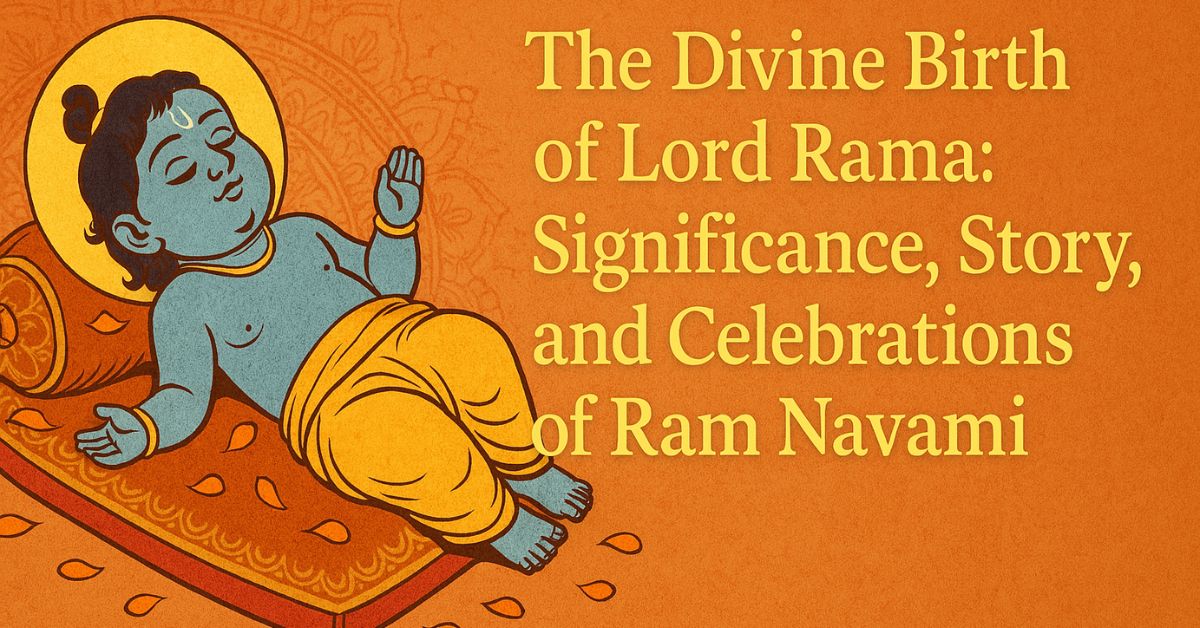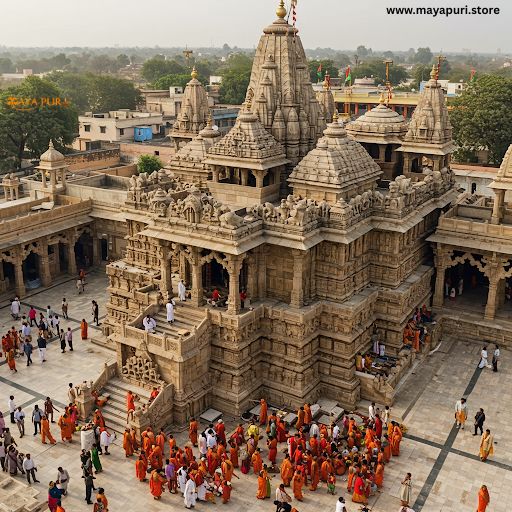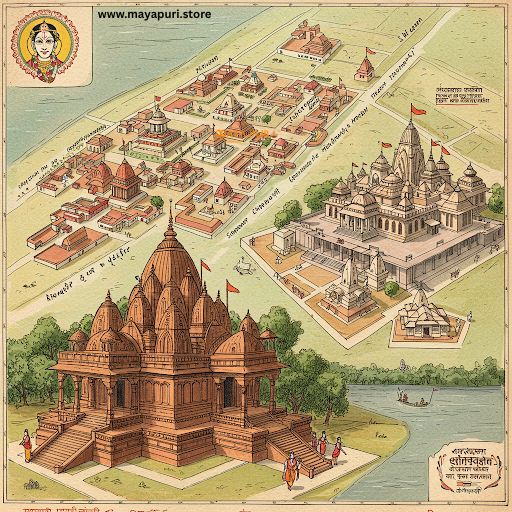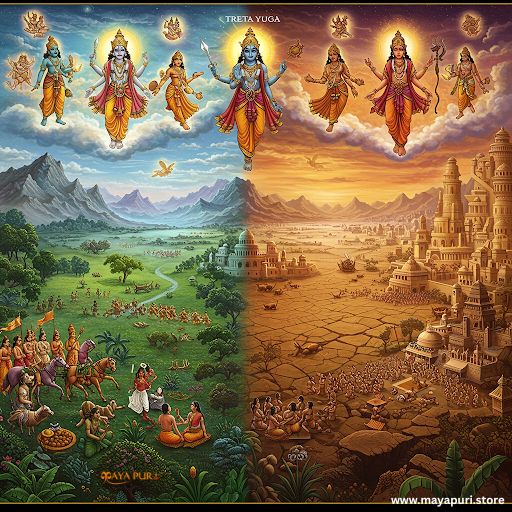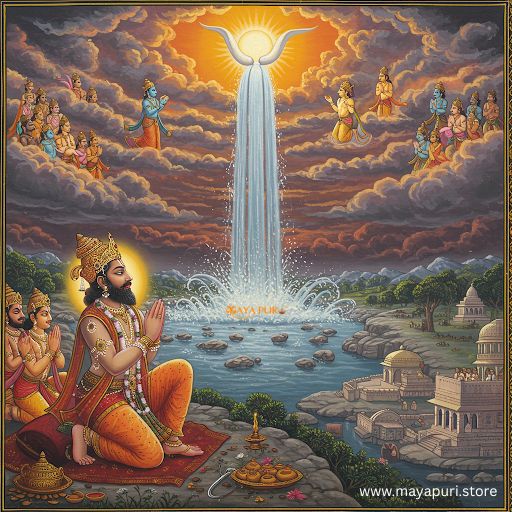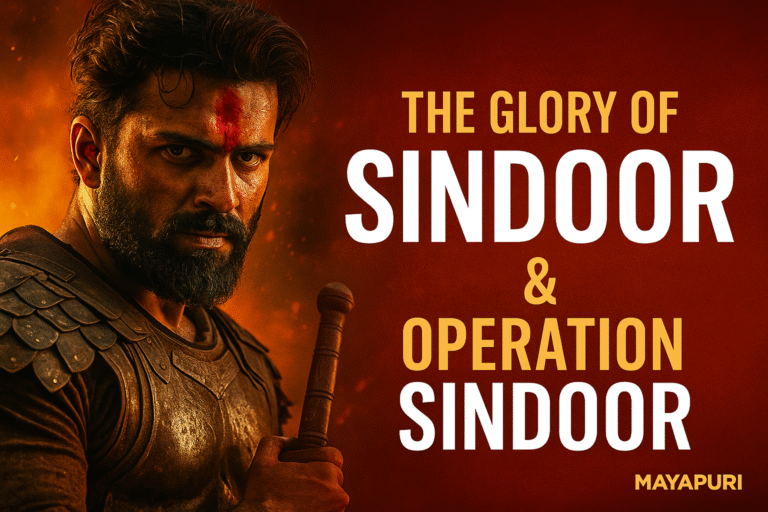The Divine Birth of Lord Rama: Significance, Story, and Celebrations of Ram Navami
Ram Navami is one of the most auspicious festivals celebrated by Hindus across India and the world. It marks the birth of Lord Rama, the seventh avatar of Lord Vishnu, and symbolizes the triumph of dharma (righteousness) over adharma (evil). Falling on the ninth day (Navami) of Chaitra month in the Hindu calendar, usually in March or April, the day is filled with devotion, fasting, and celebration.
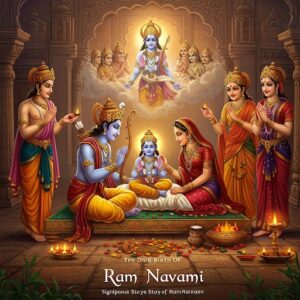
In this post, we’ll explore the mythological story of Ram Navami, its spiritual significance, and how it is celebrated in different parts of India.
The Mythological Story of Lord Rama’s Birth
According to the ancient Hindu epic Ramayana, Lord Rama was born in Ayodhya to King Dasharatha and Queen Kaushalya. King Dasharatha had three queens but remained childless for a long time. Desperate for an heir, he performed the sacred Putrakameshti Yajna, a fire ritual suggested by Sage Rishyashringa. As a result, the gods were pleased, and a divine kheer (pudding) was given to the queens.
Kaushalya gave birth to Rama, Kaikeyi to Bharata, and Sumitra to Lakshmana and Shatrughna. Lord Rama was born at noon, which is why many devotees perform special prayers at midday during Ram Navami.
Rama’s life and character exemplify the highest ideals of a son, a king, a husband, and a warrior. His story is not just about his battles but about upholding truth, duty, and moral values in every aspect of life.
The Spiritual Significance of Ram Navami
Ram Navami is not just the celebration of a birthday; it’s a reminder of the values Lord Rama stood for:
- Maryada Purushottam: Rama is considered the perfect man. His life sets an example of righteousness.
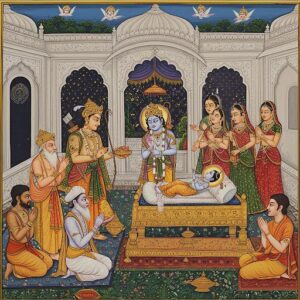
- Victory of Good Over Evil: His defeat of Ravana is symbolic of the triumph of good.
- Devotion & Dharma: His unwavering commitment to dharma is still a guiding light for millions.
- Unity in Diversity: Lord Rama is revered in both North and South India, showing how his appeal cuts across regions and cultures.
How Ram Navami is Celebrated in India
Ram Navami celebrations differ across regions, but the core spirit remains devotion:
1. Ayodhya, Uttar Pradesh:
The birthplace of Rama sees grand celebrations. Huge processions, Ram Leelas, Ganga aartis, and a dip in the Saryu River mark the day. Temples are adorned, and thousands gather to chant Jai Shri Ram.
2. South India:
In Tamil Nadu and Andhra Pradesh, temples conduct recitations of the Ramayana, bhajans, and kalyanotsavams (celestial weddings of Lord Rama and Sita).
3. Maharashtra:
Families clean their homes and place pictures or idols of Lord Rama. Devotees observe fasts and offer panakam (jaggery drink), kosambari (salad), and fruits to the deity.
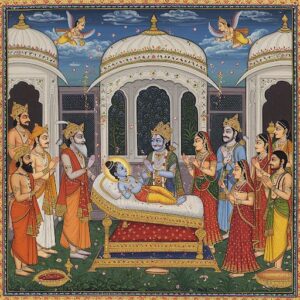
4. West Bengal and Odisha:
Here, Ram Navami often overlaps with the Chaitra Navratri, and devotees worship Lord Rama along with the Goddess Durga.
Fasting and Rituals on Ram Navami
Fasting is common on this day. Devotees perform:
- Abhishekam (ritual bathing) of Lord Rama’s idol with water, honey, milk, and ghee.
- Reciting Ram Raksha Stotra, Hanuman Chalisa, and Ramayana Path.
- Visiting temples, especially Rama temples, to participate in bhajans and kirtans.
- Decorating the puja room with fresh flowers, diyas, and incense.
The belief is that observing these rituals brings peace, prosperity, and liberation (moksha).
Cultural Impact of Ram Navami
The legacy of Lord Rama goes beyond religion. His story is told through:
- Ram Leela performances in villages and cities.
- Television adaptations and movies.
- Books and discourses by saints and scholars.
In modern times, Ram Navami unites people with the message of truth, strength, and duty. The name ‘Ram’ is chanted not just as a prayer but as a mantra that gives solace and strength.
Modern Relevance of Lord Rama
In today’s chaotic world, Lord Rama’s life offers timeless lessons:
- Patience in suffering
- Courage in adversity
- Humility in power
- Faith in dharma
Whether you are religious or spiritual, the principles from Ramayana hold relevance in both personal and professional life.
Conclusion
Ram Navami is more than a festival—it is an emotion, a celebration of righteousness, truth, and divine order. Celebrating this day connects us to our roots and reminds us that in the end, truth always prevails.
So this Ram Navami, light a diya, chant the name of Ram, and try to live by the values he embodied.
Jai Shri Ram!

